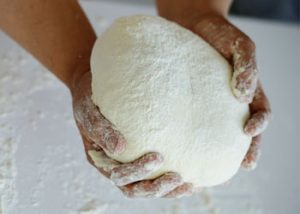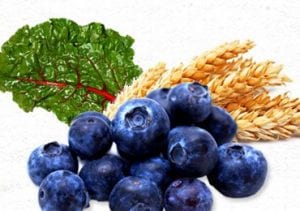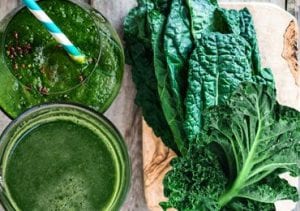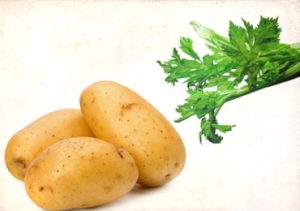Flour is the basic ingredient present in every kitchen. In earlier times, wheat flour was prevalent in all households, but in today’s modern world each kitchen features at least two or more types of flour in their pantry.
What is Flour?
Flour is the powder made by grinding raw grain, pulses, roots, nuts, or seeds. It is used as a food staple all over the world. There are many ways to cook the flour. The cooking techniques differ for flour type as well as the end product.
Types of Flour Based on Usage
The use of flour in different food items is also a way to distinguish the types of flour. Flour can be categorized based on the usage into the following categories –
1. Bread Flour
The flour used for making bread is different from other types of flour. It is more dense and higher in protein content than cake flour. It is made from whole wheat and has higher gluten content. The protein content in the flour enables better baking of dense bread, as it enables retention of air bubbles when the dough is kneaded.
2. Cake Flour
The cake flour is traditionally bleached finely ground wheat. The flour is low in protein ((only 5 – 8%) and is used only for making cakes. The flour absorbs more liquid and traps lesser air. The flour enables lightness in cakes. It is not recommended that you use this flour for bread, due to its high starch and low protein content.
3. Pastry Flour
The pastry flour is similar to cake flour in its low (5 – 8%) protein content. It is also very finely ground and is bleached before usage. Although some companies do provide unbleached pastry flour, professional bakers use bleached pastry flour for their pastry baking needs. It is made with a softer variety of wheat.
4. All Purpose Flour
This is the most common type of flour that is found in most households. It can be stored for long as it has the seed’s endosperm. This quality increases shelf-life of the flour. It is purported to contain only 10-13 % protein content. It can be used for light baking, bread making, and as a pizza or pasta dough.
5. Whole Wheat Flour
This is the densest flour valuable in the market. This flour is made from grinding the endosperm, germ, and bran. The flour is rich in fiber. It is mostly used to make coarse baking products. It does not allow a lot of liquid to permeate to the kneaded dough.
Types of Flour Based on Grain
In today’s world, the traditional wheat flour is no longer a dietary staple; today flour is made from different types of grain. The flours can be differentiated based on the type of grain used to make it. Let’s look at the type of flours on the basis of grain –
1. Almond Flour
As the name suggests, this flour is made by using almonds. The almonds are blanched and then de-skinned before being ground finely into flour. This flour is gluten-free. It is usually used to add flavor, texture, and nutrition.
Almond flour is considered to be low in carbohydrate content and it is, therefore, a low-calorie flour. This flour has a sweetish taste to it. It is rich in Vitamin E, manganese, and magnesium. Almond flour is good for baking or crumbing on dishes.
2. Wheat Flour
This flour is made by different varieties of wheat ground to make a powder. It ranges in its protein content dependent on the types and parts of wheat used to make the flour. It can be used to make cakes, bread, pastry, pizza, or pasta.
Wheat flour is rich in gluten and has 8 – 11 % protein content. It is a good source of carbohydrates and it is necessary for the daily calorific needs of a person.
3. Barley Flour
Whole barley is ground to make barley flour. This is low in gluten content. It is the most popular alternative to wheat flour. It can be used to make flatbread, quick bread, and pancakes. It is considered to be a high-fiber low-calorie alternative flour. This flour does not produce a good rise after kneading; therefore, it is not recommended for regular bread or cakes.
Barley flour is considered to be beneficial to digestive health and is also good for weight loss. It is also considered to be good for patients with high blood pressure and high cholesterol levels.
4. Buckwheat Flour
This flour is made by grinding buckwheat, which is a pseudocereal. It is an alternative to wheat grain and is gluten-free in nature. It is high in mineral content and is considered beneficial for diabetes patients.
Buckwheat is also purported to have antioxidant properties; therefore, it has been considered as a health food item. It is expected to have close to 13% protein content. Usually, buckwheat flour is used to make pancakes or add nutritional value to regular flour.
5. Chickpea Flour
The grinding of the chickpea gram produces chickpea flour. The gram/lentil is firstly roasted, then de-shelled, and then ground to a fine powder. Chickpea flour has a very high protein content and comparatively lower calorie content when compared with wheat flour. It is high in magnesium, vitamin B6, and potassium content.
Chickpea flour has a dense and sticky texture. It is considered to be a gluten-free alternative flour for people with special dietary needs. It can be incorporated in many ways into food to increase the nutritional content of the meal. It is mostly used in crepes, fritter batters, sauces, and soups.
6. Corn Flour
Corn flour or maize flour is obtained by grinding the whole corn grain kernels into powder. It is very starchy in nature and is considered very high in calorie content. This flour is usually yellow in color but sometimes a white corn flour is also available in the market. This difference in color is usually due to the variety of corn used to make the flour.
Since it contains the endosperm, germ, and hull of the corn; it is considered whole grain flour. This flour is extremely versatile and can be used to make breaks, fritter batter, pancakes, or waffles. It is also used as a thickening agent in soups and sauces.
7. Coconut Flour
Coconut flour is the soft flour made by drying the pulp left after coconut milk has been extracted. It is a low-calorie gluten-free alternative to wheat flour. It is purported to help in maintaining blood pressure and blood sugar. It is also considered good for patients of digestive issues.
Coconut flour contains 20 % protein-rich content. It has high plant-based iron content and is considered a mineral-rich food source. It can be used in making muffins, cakes, bread, etc. Usually, this flour is used to add taste and texture to the regular wheat flour mix.
8. Millet Flour
Millet grain is stone round to create a powder called Millet flour. The flour is mostly preferred in arid or semi-arid regions of the world as an alternative food source to wheat. Raw millet has 11 % protein content. It is a gluten-free flour and is also considered to be a rich source of proteins. It is usually used to make flatbreads.
9. Oat Flour
Oat flour is a gluten-free protein-rich flour. It is high in fiber content and beneficial for digestive disorders. It is also considered good for diabetes and high-cholesterol patients. Oat flour is considered to be high in selenium content and omega-3 fatty acids.
Oat flour is used as a flavor enhancement agent as well as a good substitute in recipes that do not need the dough to rise. It is mostly used in pancakes and cookies.
10. Rice Flour
Finely milled rice is called as rice flour. The flour is rich in carbohydrates and is considered to be free of gluten content. It has 12% protein content and is used as a high-calorie energy source. It can be made from white or brown rice.
Rice flour is used in pancakes, fritter batter, or noodle dough. It is usually used to increase the taste and texture of a flour mix. It is also used as a thickening agent in soups and sauces.
11. Semolina Flour
Semolina is coarsely ground durum wheat. When this semolina is further finely ground it turns into semolina flour. This is a high gluten content flour. This flour is most commonly used to make noodles, pasta, or porridge. In baking, it is usually used to add texture and flavor to bread and cakes.
This flour is high in calorie content and has close to 12 % protein content. It is also rich in iron and magnesium content. Semolina flour is purported to be good for heart health and also said to improve digestive disorders due to high fiber content.
12. Tapioca Flour
Tapioca is the starch extracted from the roots of the cassava plant. It is high in carbohydrates and fiber content. Tapioca flour is considered a good gluten-free alternative to wheat flour. It is most commonly used for bread, puddings, flatbreads, and desserts. It is also preferred as a thickening agent in sauces.
Tapioca flour differs from cassava flour, which is flour made from the cassava plant. Tapioca is mostly rich in calories and can be used for complimenting dietary needs in gluten allergic patients.
Frequently Asked Questions About Flours
1. How to choose the correct flour?
Ans : There is no wrong choice for grain; the choice depends on the end-use of the flour. If you are looking to make bread or cake, it is preferable to have some gluten content in the flour as it makes the bread or cake spongy and well aerated. For making flatbreads, pastries, etc.; low gluten content flour can also be preferred.
If you have special dietary needs of high fiber or gluten-free content, the other flour highlighted in this article should be able to guide your choice.
2. Why is gluten important in flours?
Ans : Gluten is the chemical formed when the flour proteins are mixed with water. This gluten is responsible for trapping air bubbles in the dough. The trapped air makes for airy, soft, and chewy end-product.
Gluten is important for making bread or cakes, this is what gives them their soft texture and light crusts.
3. Which is the healthiest flour for weight loss?
Ans : The healthiest flours are those with the least gluten content. The chickpea, millet, or coconut flour are rich in protein content and they can also be incorporated in a diet to increase protein and mineral intake.
Conclusion
Flours are our part of daily meals. They form an important part of our diet. The choice of flour depends on the type of use and the nutritional content we need from it. In today’s world, we have a range of flour choices available to us to improve our cooking, food flavor, and our diet’s nutritional content.



















great article… can you post more about how to maintain diet … thank you